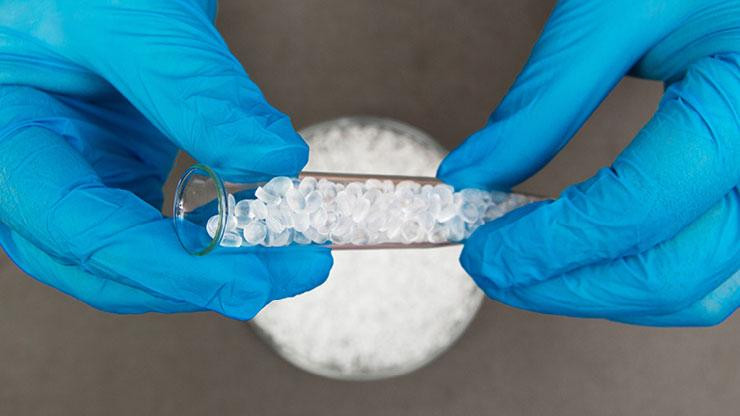Thermoplastic elastomers, also known as TPEs, are a class of copolymers or a physical mix of polymers that have both thermoplastic and elastomeric properties. In the United States, the thermoplastic elastomer has seen tremendous growth since the late 20th century as more applications are discovered and production methods advanced. Some key factors have contributed to the rise of TPEs in America:
Improved manufacturing technologies: Advances in polymerization and compounding techniques have made it possible to economically produce thermoplastic elastomers with tailored physical properties on a large scale. Injection molding allows for high-speed, low-cost fabrication of intricate parts from TPE compounds. Advances like reactive extrusion further drive down costs.
New TPE chemistries developed: Continuous research by both large multinational chemical firms and smaller startups has led to the commercialization of many new TPE types beyond the original styrenic block copolymers. Key examples are thermoplastic polyurethanes, copolyester elastomers, and thermoplastic vulcanizates. Each new chemistry enables new applications.
Substitution of other materials: By marrying thermoplastic processability with elastomeric performance, TPEs allow for the replacement of thermoset rubbers in many applications. Production downtime and costs associated with rubber molding are eliminated. Dynamic TPE parts can also displace metals in some cases.
Wider application areas discovered: Early uses of TPEs were primarily limited to footwear andautomotive interior parts. But continuous innovation has facilitated their adoption in more complex systems like healthcare devices, sporting goods, electronics components and building&construction products.
Major Players And United States Thermoplastic Elastomer
Several large multinational chemical firms have emerged as leading global producers of thermoplastic elastomers, with significant operations located within the United States. Among the top TPE suppliers worldwide are:
- Dow - Headquartered in Midland, Michigan, Dow has major production plants for styrenic block copolymers, thermoplastic polyolefins and thermoplastic vulcanizates across the Midwest and South.
- DuPont - Operating out of Wilmington, Delaware, DuPont offers a wide variety including thermoplastic polyurethanes and thermoplastic copolyesters. Major TPE production facilities are based in Virginia and Texas.
- BASF - The German chemical giant has two large thermoplastic elastomer compounding plants in New Jersey and Illinois catering to the North American.
- Huntsman - Another large petrochemical producer, Huntsman manufactures and sells a variety of TPEs including thermoplastic polyurethanes and thermoplastic vulcanizates from its main US production hub in Texas.
- Lubrizol - This specialty chemicals firm wholly owned by Berkshire Hathaway manufactures thermoplastic polyurethane elastomers in Ohio and Kentucky.
- Covestro - The former Bayer MaterialScience, Covestro runs a major TPE production site in Alabama focusing on copolyester thermoplastic elastomers.
The concentration of large TPE manufacturers within the United States reflects its status as a leading global . Key production hubs are located around major petrochemical centers in the Gulf Coast and Midwest regions. Secondary compounding also thrives there and across converter clusters on the East and West coasts.
Major End-Use s And Applications
With its improved versatility compared to traditional rubbers, thermoplastic elastomers have found widespread use across many industries in the United States:
- Automotive: Used in car interior parts, exterior trim, seals and hoses to replace thermoset rubbers. Popular TPEs include TPP/TPU/TPO.
- Medical: Biocompatible TPEs feature in devices, tubes, stopcocks and silicone replacement parts owing to benefits of sterilizability.
- Footwear: Sole pads, gaskets, heels and cushioning components of shoes are often made from TPEs like styrenic TPE due to good abrasion resistance.
- Sporting goods: Components of balls, gloves, protective equipment leveraging properties like elasticity, durability and processability of TPVs/TPUs.
- Appliances: Seals, gaskets, protective trim in home/commercial appliances take advantage of TPE's heat and chemical resistance qualities.
- Buildings & construction: Roofing membrane, waterproofing, hoses benefit from weatherability of TPOs and other TPE chemistries.
- Electronics: Connectors, protective casings and cable jacketing in devices use thermoplastic dynamic propertiesenabled by TPU, TPS, polyethylene elastomers.
By providing solutions combining plastic fabrication ease and rubber-like performance, thermoplastic elastomers have risen to prominence in the United States supported by a strong industrial base. Continued product and process improvements also promise further expansion.
Get more insights on this topic:
About Author:
Ravina Pandya, Content Writer, has a strong foothold in the market research industry. She specializes in writing well-researched articles from different industries, including food and beverages, information and technology, healthcare, chemical and materials, etc. (https://www.linkedin.com/in/ravina-pandya-1a3984191)

